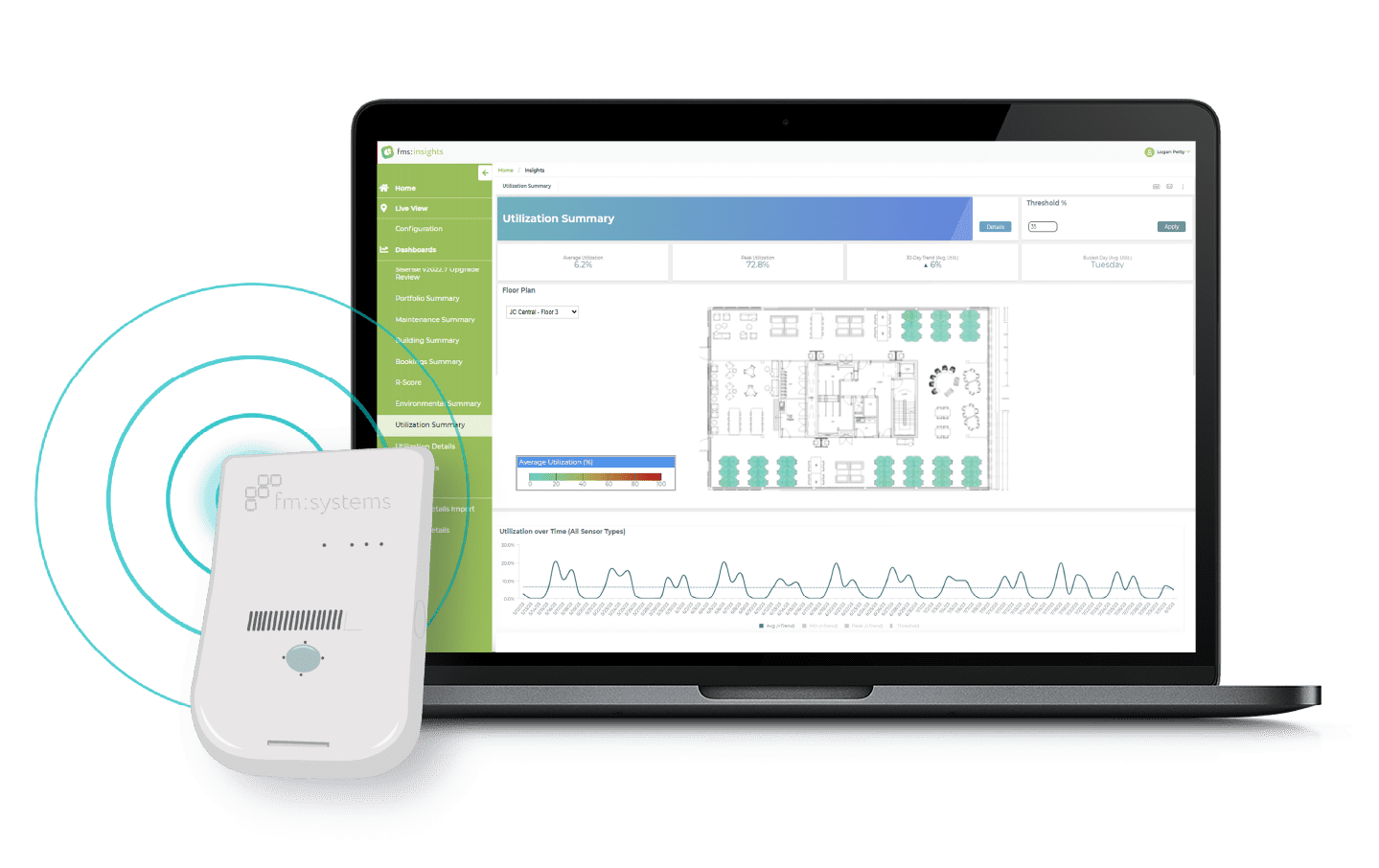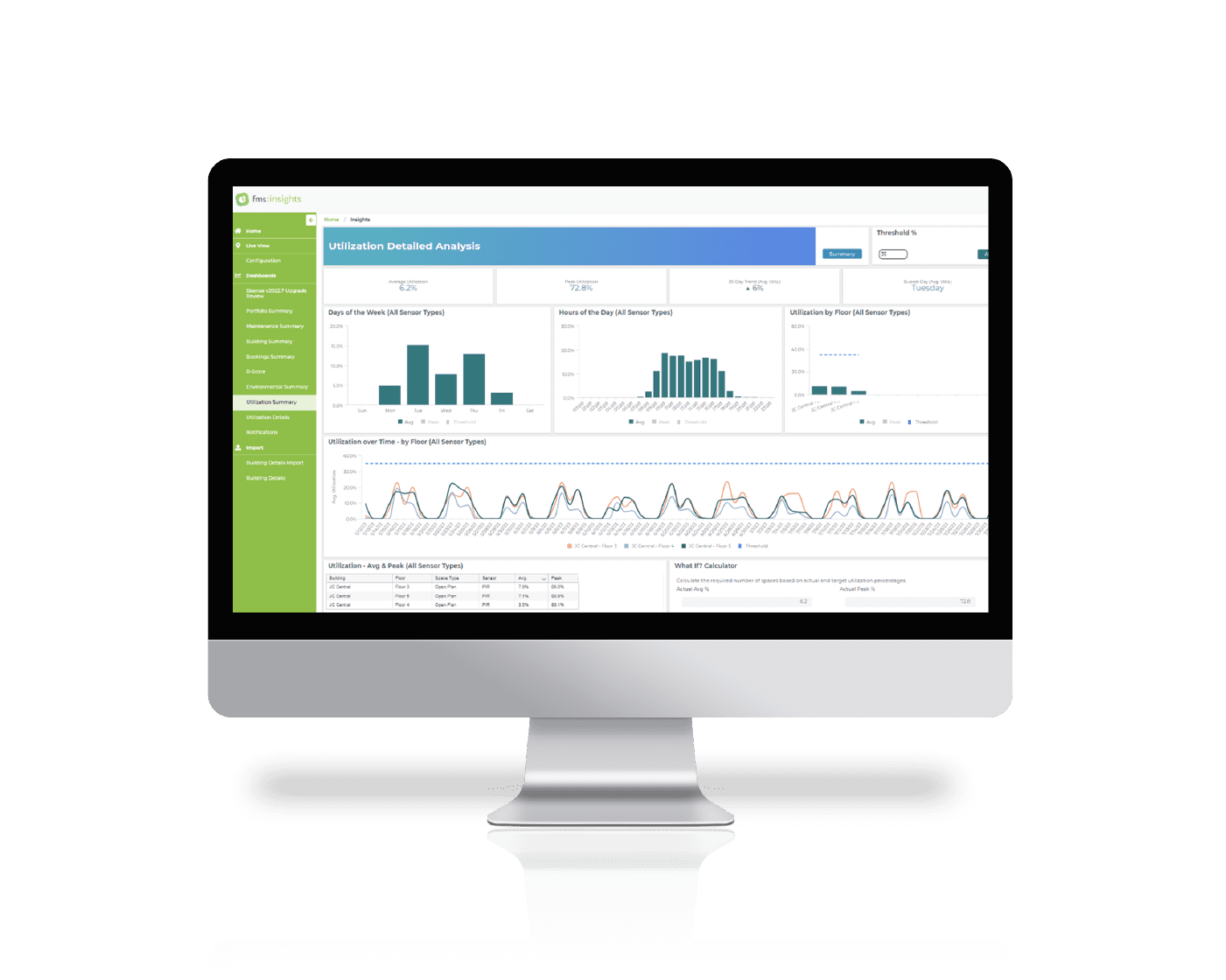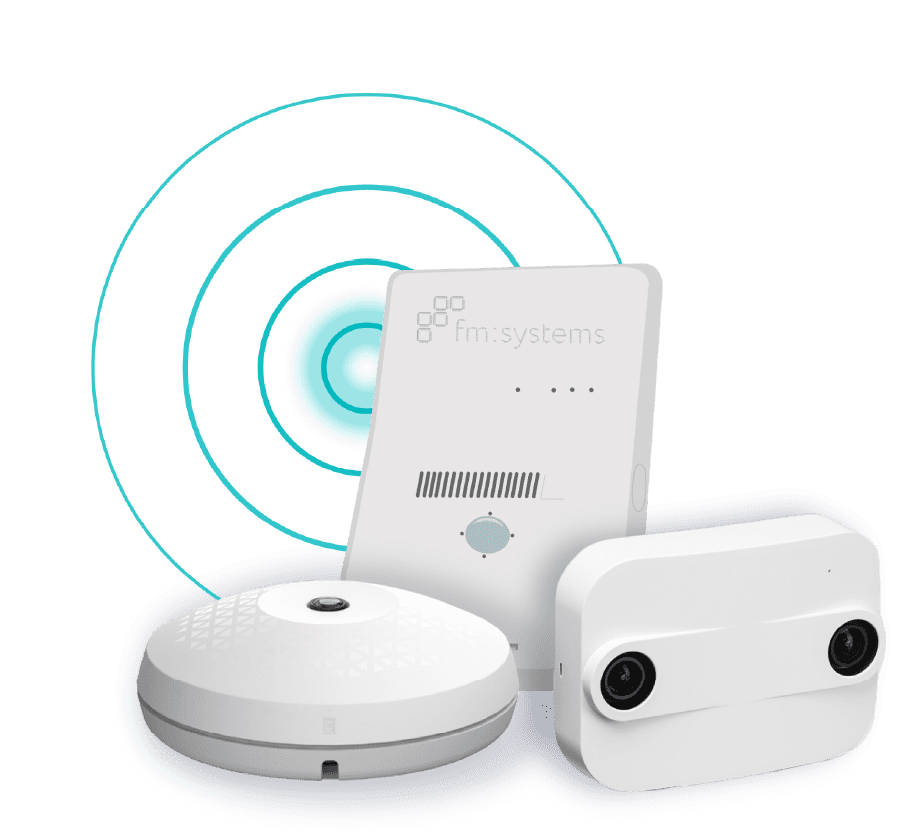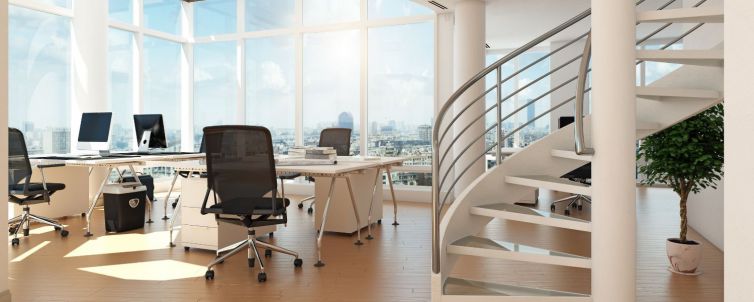Driver and Vehicle Licensing Agency (DVLA)
The Client
The Driver and Vehicle Licensing Agency (DVLA) is a government organisation in the United Kingdom responsible for maintaining a database of over 50 million drivers and more than 40 million vehicle records. The agency issues driver licences, manages the collection of vehicle fees and taxes, and sells personalised registrations. Headquartered in Swansea, Wales, the DVLA employs around 6,000 people operating out of a number of buildings.
The Challenge
Before using FM:Systems occupancy sensors, DVLA staff responsible for managing the organisation’s real estate footprint would receive requests from different areas of the business suggesting an increase in space needs as well as trying to manage the estate more efficiently. In past years, those requests were evaluated manually, using static information, such as the head count for that department, the type of work they perform, and the number of employees that work within the buildings taking into consideration the available space. To assist with their assessments, the accommodations team used a number of internal booking systems to inform space allocation as appropriate.
“It was fit for purpose, but it was probably 5-10 years out of date,” Tracy Rose, accommodation and services manager at the DVLA recalled.
“It was quite resource intensive, as well,” added Damian Devonald, head of workplace and accommodation at the DVLA. “We had to do physical spot checks on the space being used to populate the database, rather than having that data created for us.”

Even using this antiquated system, it was often clear to Damian and Tracy after reviewing the data that the department requesting more space already had sufficient space for their needs but we did not have data driven evidence to back up the decision making.
“They would say, ‘We need more desks to deliver our services,’” Tracy said. “In reality, they didn’t need more desks. They needed to have smarter ways of working and allocating and managing their space accordingly.”
“It wasn’t easy for us to recommend that we did not need more workspaces because the reality was, we couldn’t show them the actual data to back up our decision,” said Damian.
With the introduction of hybrid working it was imperative that we looked at potential solutions to help inform the Estates strategy.
The DVLA previously run a space utilisation system pilot which was a success at the time but was not rolled out as other projects took priority at the time.
We were in the process of developing an in-house solution with third party contractors, but that didn’t give us the granular data that the FM:Systems analytics solution could offer… With FMS:Insights, we could filter it down per department, per floor, per building, per day of the week and concentrate on those actual core hours, which gives us better average and peak occupancy throughout that working day, week or month.
Damian Devonald, Head of Workplace and Accommodation, DVLA
The Solution
“We realised there was a need to procure a space management solution so we began to look at options in line with our other projects,” said Tracy.
After evaluating several options from various workplace management vendors, a decision was made to look at procurement options which resulted in FM:System’s being identified as preferred supplier through an existing government contract. The FM:Systems team was tasked with supplying workplace sensors with the FMS:Insights analytics solution.
“We were in the process of developing an in-house solution with third party contractors, but that didn’t give us the granular data that the FM:Systems analytics solution could offer. For example, it couldn’t give us an hour-by-hour breakdown of occupancy throughout the day or pinpoint specific times,” said Damian. “With FMS:Insights, we could filter it down per department, per floor, per building, per day of the week and concentrate on those actual core hours, which gives us better average and peak occupancy throughout that working day, week or month.
For Tracy, it was the ease-of-use and the dashboards that gave us confidence that FM:Systems could deliver the solution we needed.
“The dashboards in FMS:Insights are very good and the reports are really useful,” she said.
Implementation of the system involved the deployment of over 5,000 sensors, host devices for those sensors and a dedicated Wi-Fi network through which they would connect to FMS: Insights over the internet. That work was done over a six-week period, with the system going live in late June 2023.
It’s been quite easy… Whenever we’ve run into any issues, they’ve been sorted out straight away. The support we have received from the FM:Systems team has been really good. They have been very approachable and supportive throughout the process.
Tracy Rose, Accommodation and Services Manager, DVLA
The Results
The implementation of the system went smoothly, with minimal disruption to staff and operations. Tracy and Damian also gave FM:Systems high marks on how they’ve onboarded and trained DVLA staff in the use of the system.
“It’s been quite easy,” said Tracy. “We had a training event where we were all engaged as administrators, and I find it quite simple getting everyone access to the right systems. It’s very slick. Whenever we’ve run into any issues, they’ve been sorted out straight away. The support we have received from the FM:Systems team has been really good. They have been very approachable and supportive throughout the process.”
“From the project sign-off to handing over to the training team, that process has really helped us see the ease of use and ease of access of the system,” added Damian. “I think that worked very well for us.”
Though it’s still early in the DVLA’s rollout of the FM:Systems solution, Tracy, Damian, and their colleagues have already integrated the system’s capabilities into their daily workflow.
“We’ve started issuing reports on occupancy and desks to the business,” said Tracy. “
The new system has also helped make conversations about space utilisation more data driven supported with the evidence behind decision making.
“The system can also help us operate the building more efficiently in the future in terms of the system identifying areas of space not being used at certain times resulting in smarter building management,” said Damian. “Using the system, we can identify areas that aren’t being used and manage the environment better.”
Another benefit that’s outside of the core function the system was intended to serve is scheduling cleaning services to improve efficiency and minimise disruption.
“We’ve shared access to the system with our cleaner service provider, so now they can operate around the occupancy hours of the building,” said Damian. “We can see there’s far more to the system than just space and occupancy. The more we use it, the more we’re uncovering.”
The system can also help us operate the building more efficiently in the future in terms of the system identifying areas of space not being used at certain times resulting in smarter building management,” said Damian. “Using the system, we can identify areas that aren’t being used and manage the environment better.
Damian Devonald, Head of Workplace and Accommodation, DVLA
What’s Next
As Damian and Tracy uncover more potential use cases for the FM:Systems solution, they’re beginning to think about other ways the system can improve efficiency.
“We have refurbishment projects coming up, so we will need to vacate whole floors,” said Tracy. “Now, we’ll be able to identify usable space and easily relocate those staff so we can free up the floor that needs to be refurbished, without disrupting business.”












